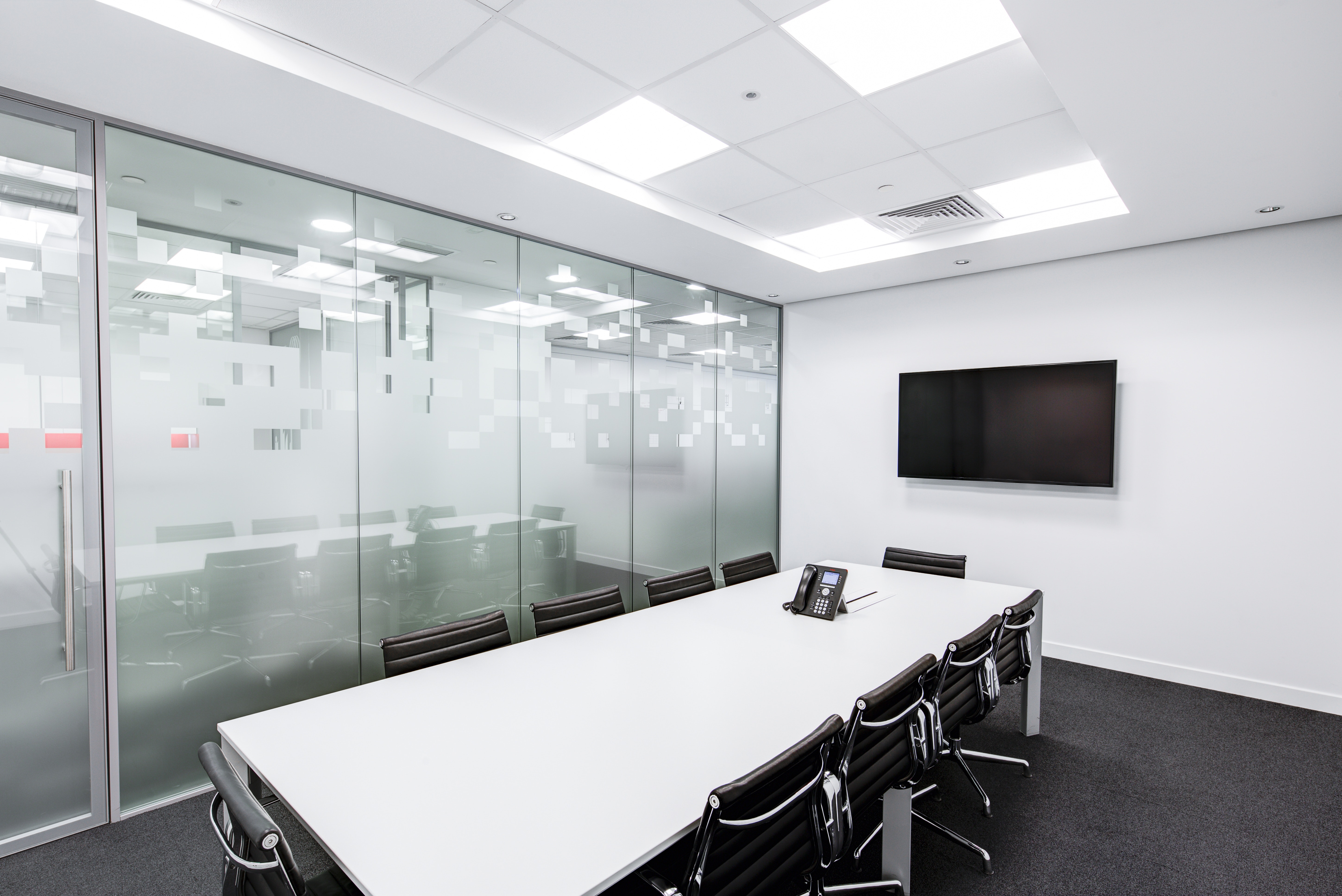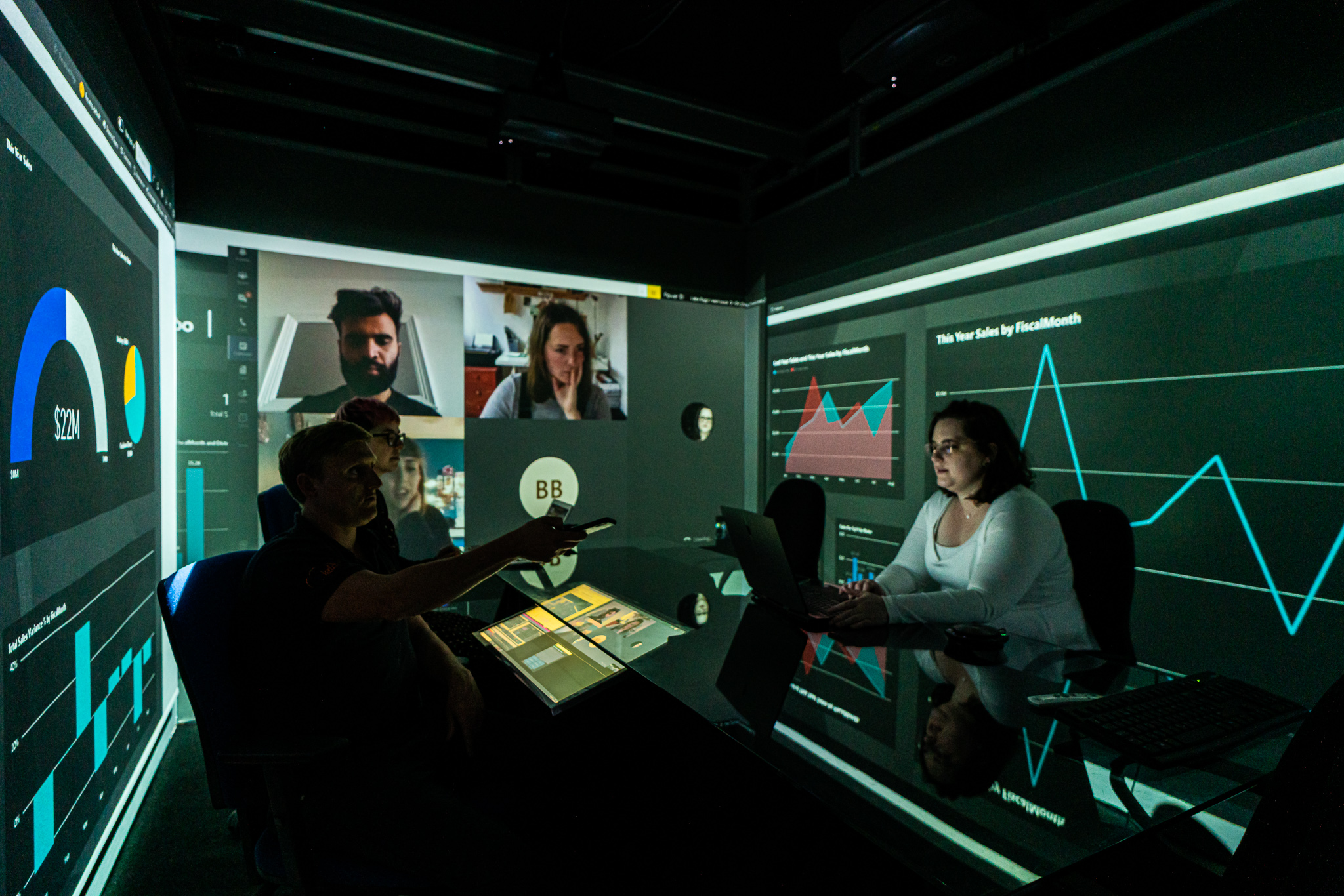
Filling an empty room with friendly faces
31st March 2020
We’ve had video conferencing on the brain lately. And, for obvious reasons, so too has the rest of the world.One platform in particular, Zoom…
As the world continues to grapple with controlling the COVID-19 pandemic, companies are weighing up how to keep their employees working safely. Do you let staff continue to work remotely? Or allow them to return in dribs and drabs, with rotas and social distancing?
The problem is, whatever approach you take, there are going to be flaws.
Sure, you can let staff return to the offices, and set up communal points for cleaning, rotas, one-way systems. But you're slapping a plaster over a gaping wound. Our traditional offices and meeting rooms were designed in a time before we realised that, actually, people travelling miles-and-miles for a single meeting might not be worthwhile.

But, the thing is, people will have to return to the office because humans need that face-to-face interaction. It's unscheduled, unplanned conversations that spark ideas and innovation. And, as some people return and others don’t, this can lead to a sense of exclusion and disconnect from your colleagues and your company.
Finally, as you might have discovered yourself, having everything you work with, contained in a small screen on limited desk space, isn't actually the best or most natural way to engage with or visualise information. Plenty of people have noticed they're working longer. But are they working smarter?
We’re not the only people to think there’s potential and possibility to embrace change in the light of COVID-19. Deloitte thinks so. Fortune thinks so. Bill Gates thinks we can make things better and more efficient than they were before. Adam Grant in The Economist thinks we can improve everything from increasing job satisfaction to creating more ethical leadership.
So, what we should be thinking about is not just how to make our offices compliant with social distancing, but how to maximise their use and space. What we should be thinking about is working smarter and working better.
And that's why, for so many companies, Igloo is working on installing immersive technology. We’re building new spaces, or retrofitting existing spaces to be places of ideation, creativity, visualisation, and collaboration.
And what makes it particularly suited for the now and forever is that it’s ideal for having a few colleagues within the room while others video call in, represented with a life-sized montage of faces.
Imagine all your data and apps around you. Easy to visualise. Moving everything on your 2D screen into a 3D space. And that makes things easier to collaborate on, chat over, see, brainstorm, and discuss.
Dr. Kerstin Sailer, speaking in The Guardian, signed off her column on reimagining the office post-COVID with “We can surely make it through more months or years until we have a Covid vaccine, but we should not sacrifice the idea that we will all meet again regularly in a space, a space that provides the best design possible for people to share a sense of togetherness and purpose.”

And we absolutely agree. That new meeting space is an immersive space. A space that can allow us to collaborate in new ways, without our tools and apps restricted to a small screen ahead of us. A hybrid physical-virtual workspace where colleagues can meet in real space, welcomed whether they’re calling remotely or in-the-flesh.
The old meeting room is defunct. Instead of keeping it on its last legs, let’s think about how we can replace it.
What are you looking for today?
 The top features of our software for immersive spaces.
The top features of our software for immersive spaces. How Shared Immersive Technology Delivers Value Across the Entire Energy Asset Lifecycle
How Shared Immersive Technology Delivers Value Across the Entire Energy Asset Lifecycle What are the benefits of immersive training compared to e-training?
What are the benefits of immersive training compared to e-training? Evolution Of Virtual Reality
Evolution Of Virtual Reality What Is The Business Case For Immersive Spaces?
What Is The Business Case For Immersive Spaces? Using Immersive Spaces To Elevate Your Business
Using Immersive Spaces To Elevate Your BusinessCategories: Products, Shared VR, News

31st March 2020
We’ve had video conferencing on the brain lately. And, for obvious reasons, so too has the rest of the world.One platform in particular, Zoom…

22nd March 2021
When looking to create a shared immersive space, there is SO much to consider. Thinking about what kind of space you have, what kind of space you…

21st February 2022
Since the pandemic, many businesses have switched to a hybrid model of working. It gives employees the best of both worlds, with more time at home…